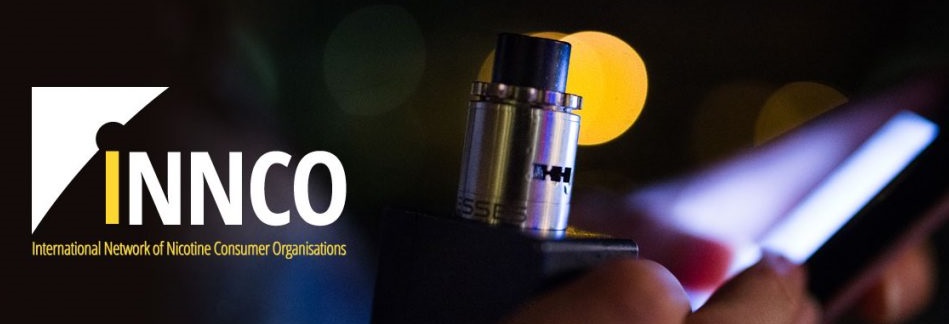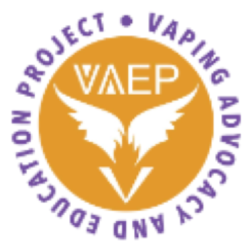Vapers Digest 17th November

Monday’s News at a glance:
Lancs Cops Busy in October – Chewy Issues in Barrow-in-Furness – YouTube’s Crackdown on Harm Reduction Voices Is Back — and Worse Than Ever – How the BMJ (Emily Banks et al) Turned a Human Rights Argument Into an Anti-Vaping Manifesto – How long can you hold on to a bubble before it bursts? – The “Other” COP – Right next door to Hell – Most smokers now wrongly believe vaping is more dangerous than cigarettes – Copwatch’s preliminary journal #FCTCCOP11 – WHO FCTC asked to respect consumer access to safer nicotine products – WHO: Opposition OF Harm Reduction – Misinformation from Anti-Vaping Groups is Causing Increasing False Beliefs among Policy Makers – American Lung Association Directs Youth to Complain about Seeing People Use Nicotine Pouches in Workplaces – U.S. voters broadly support a new approach to tobacco regulation – Where next for nicotine? | In focus: Smoking and next-gen – FCTC COP11 Amid Warnings That Taiwan’s Vape Ban Has Fueled an Uncontrolled Illicit Market – Africa: Voices from African Scientists, Journalists, and Policymakers on Regional Health Priorities Ahead of COP11 – GOLDBERG: Governments must target the black market, not legal vendors, to crack down on youth vaping – A TAX ON QUITTING? WHAT’S THE REAL STORY BEHIND IRELAND’S NEW VAPE LEVY?
Two From Dave Cross, Planet of The Vapes
Lancs Cops Busy in October
The police in Lancashire were busy during October with arrests, closures and accounts frozen as part of operation to tackle illegal activity involving illicit vape products. As part of Operation Wanderstar, the keen cops nabbed illicit cigarettes and vapes valued at nearly £200,000 “as part of our proactive operations to target businesses flouting the law across Lancashire”.
Chewy Issues in Barrow-in-Furness
A Barrow-in-Furness shop owner has been left to chew on the fact he’s been ordered to close the store for three months after seizures of illegal tobacco and vape products following a joint operation by Westmorland and Furness Trading Standards and Barrow Neighbourhood Policing Team.
YouTube’s Crackdown on Harm Reduction Voices Is Back — and Worse Than Ever
Allison Boughner, World Vapers’ Alliance
Back in 2022, I wrote about how YouTube was quietly removing, age-restricting, and demonetizing videos from long-time vaping creators like Nick “Grimm Green” Green, Matt Culley, and Phil Busardo — the very people who helped millions of adult smokers discover safer alternatives and learn how to use them responsibly.
At the time, we hoped the wave of strikes and takedowns was a glitch, or at least a passing over-correction.
Three years later, it’s clear that it wasn’t.
How the BMJ (Emily Banks et al) Turned a Human Rights Argument Into an Anti-Vaping Manifesto
Alan Gor, Australia Let’s Improve Vaping Education (A.L.I.V.E.)
The BMJ’s latest piece, “How e-cigarettes compromise children’s human rights”, reads less like a scientific review and more like a political pamphlet for the WHO’s anti-nicotine lobby. It claims to champion the rights of children, but what it actually does is weaponise human rights language to justify policies that keep adults smoking and leave teenagers exposed to black-market nicotine products.
How long can you hold on to a bubble before it bursts?
Stefan Mathisson, Vejpkollen
OPINION. Nicotine policy is changing – and the WHO and many EU countries risk being on the wrong side of this trend. Sweden shows that harm reduction works, while many EU countries and the WHO cling to bans that favour cigarettes. Consumers, poorly trained doctors and future generations of nicotine users are in the firing line.
The “Other” COP
Claudio Teixeira, Disobedient Margins
While official delegations seal opaque consensuses, on the fringes of COP11 a parallel gathering brings together scientists, users, and public health dissidents to rewrite the rules of care—guided by data, not doctrine. A silent insurgency on the margins, seeking to rescue science from moralism and care from bureaucracy.
A few minutes away from COP11, where the language of public health reverberates as a hollow, technocratic mantra, another conference is quietly taking shape. Heterogeneous, informal, almost clandestine, it emerges on the periphery of the official event as a deliberate countercurrent, a necessary deviation.
Christopher Snowdon, The Snowdon Substack
The WHO’s big biennial tobacco conference kicks off this week in Geneva. A global tobacco conference wouldn’t be a bad idea right now. In a sane world, governments would be getting together to discuss how things are going so badly wrong and how to correct their mistakes.
Led astray by fanatics, a growing number of countries are seeing unintended consequences that are too disastrous to deny.

Most smokers now wrongly believe vaping is more dangerous than cigarettes
Ali Anderson, Clearing The Air
The majority of smokers in the UK now believe vaping is just as harmful – or even more harmful – than smoking tobacco, despite strong evidence that the opposite is true.
New figures from Our World in Data show a dramatic reversal in public perception over the past decade. In 2015, around a third of smokers correctly said vapes were less harmful than tobacco. Today, just 12 per cent say the same, while nearly four in ten now believe vaping is more dangerous.
Copwatch’s preliminary journal #FCTCCOP11
Loremipsum, COPWatch
The official FCTC journals are published daily on the COP11 website, during COP week. Those are accessible via the COP11 homepage – look for ‘Journals’ in the Documentation section. The official preliminary Journal was published on 3 November, with the target readership of delegates to FCTC COP.
Our readership, however, is mostly people who are denied entry to the official proceedings. So, here is Copwatch’s preliminary journal, with useful information for unofficial COP observers like us.
WHO FCTC asked to respect consumer access to safer nicotine products
Jan Escosio, INQUIRER
Greater consumer access to safer nicotine products (SNPs) is crucial for realizing the public health potential of tobacco harm reduction (THR), according to a briefing paper from the Global State of Tobacco Harm Reduction (GSTHR) project.
The paper says the World Health Organization’s (WHO) Framework Convention on Tobacco Control (FCTC) has been largely ineffective in reducing the global toll of tobacco-related death and disease and that THR should be given due consideration at the 11th Meeting of the Conference of the Parties in Geneva, Switzerland, from November 17 to 22, 2025.
Kevin Crowley, Vaping Links
The U.S. finally stopped minting the penny this week — a coin that cost more to make than it was worth for decades. Everyone knew it, but institutions clung to the old story anyway.
Public health has been having its own “penny moment” for years. The WHO still manufactures outdated narratives, treating all nicotine the same while ignoring overwhelming evidence for safer alternatives.The penny wasted money; this ideology wastes lives. It’s past time to update both the currency and the thinking. They know. We know.

Two From Dr. Michael Siegel, The Rest Of The Story
Misinformation from Anti-Vaping Groups is Causing Increasing False Beliefs among Policy Makers
The role of the tobacco control movement should be to increase the public’s and policy makers’ understanding of the health effects of smoking and tobacco use. Instead, data from a new survey by ECigIntelligence reveal that among members of the European Parliament (MEPs), an increasing percentage of policy makers fail to understand that smoking is more hazardous than vaping.
In 2000, a similar survey showed that 68% of MEPs correctly understood that smoking is more hazardous than vaping. However, in 2025, that percentage is down to 60%. The percentage of MEPs who believe that smoking is less harmful than vaping remains at about 8-9%; however, the percentage who believe that smoking and vaping are equally harmful doubled from 12% to 24%.
American Lung Association Directs Youth to Complain about Seeing People Use Nicotine Pouches in Workplaces
A campaign being run by youth in Wisconsin who are part of a group called FACT is urging their fellow youth to complain to legislators about having to see people using nicotine pouches in workplaces. Youth are instructed to tell their legislators: “What tobacco products do you still see used in places covered by the smoke-free air law (workplaces like restaurants, hotels, and offices)? Vapes? Nicotine pouches? What bothers you about seeing these products in those places?”
I spent many years of my career lobbying for smoke-free workplace laws. But when I said “smoke-free” I meant “smoke-free.” In other words, I was promoting the elimination of tobacco smoke in workplaces.
U.S. voters broadly support a new approach to tobacco regulation
PMI
New survey reveals widespread dissatisfaction with the FDA’s job performance when it comes to regulating the tobacco industry and new nicotine-containing products, with strong majorities of likely voters expressing support for FDA reform.
Varied opinions of the FDA’s performance
Likely voters in the U.S. deliver mixed reviews of the FDA’s effectiveness in recent years. A large majority agrees that real reform of the FDA is needed.
Where next for nicotine? | In focus: Smoking and next-gen
Johanna Thomson, Talking Retail
According to the 2024 Local Shop Report from the Association of Convenience Stores, more than 20% of convenience retailers’ category sales come from tobacco, e-cigarettes and vaping products, so it’s a critical revenue stream for independent stores.
Overall, in the convenience channel, combustible products (factory-made cigarettes and rolling tobacco) remain in decline, with the number of people smoking in the UK continuing to fall.
FCTC COP11 Amid Warnings That Taiwan’s Vape Ban Has Fueled an Uncontrolled Illicit Market
VAPE TAIWAN
As the Eleventh Session of the Conference of the Parties (COP11) to the WHO Framework Convention on Tobacco Control (FCTC) opened on 11/17, Taiwan’s leading tobacco harm reduction advocate warned that the country’s failed e-cigarette prohibition has created an unregulated and rapidly expanding illegal market—an outcome he urged global delegates to avoid repeating.
Wang Yu-Yang, a WHO FCTC smokeless tobacco certificated tobacco harm reduction expert in Taiwan, said Taiwan’s experience demonstrates the risks of relying solely on prohibition without viable regulatory alternatives
Africa: Voices from African Scientists, Journalists, and Policymakers on Regional Health Priorities Ahead of COP11
Michael Gwarisa, All Africa
The saying “Nothing Without Us is for Us” is a powerful reminder that lasting solutions can only emerge when those most affected are included in shaping them. This call for inclusion resonates deeply as Africa prepares to participate in key global policy spaces such as the 11th Conference of the Parties (COP11) to the WHO Framework Convention on Tobacco Control (FCTC), set for November 17–22, 2025, in Geneva, Switzerland.
Data shows that smoking prevalence in the World Health Organisation Africa (WHO AFRO) region remains the lowest among all WHO regions.
GOLDBERG: Governments must target the black market, not legal vendors, to crack down on youth vaping
Jay Goldberg, Winnipeg Sun
Policymakers across Canada should be rightly concerned about vapes falling into the hands of vulnerable youth. The illicit market is a growing problem across Canada, and many governments are stepping up to address that reality. In their 2025 budgets, the governments of Alberta, Ontario, and Saskatchewan all committed resources to crack down on contraband tobacco and the illicit market.
A TAX ON QUITTING? WHAT’S THE REAL STORY BEHIND IRELAND’S NEW VAPE LEVY?
Global Forum on Nicotine
Ireland has introduced the highest vape tax in the European Union — but experts warn it could backfire. In this episode of GFN News, Joanna Junak speaks with Will Godfrey of Filter about how the new €0.50/ml levy may reduce switching, misinform the public, and even risk increasing smoking rates. Advocates argue the policy hits low-income groups hardest and undermines Ireland’s public health goals.
Why Can’t Smokers Quit: Part I
Brad Rodu, Tobacco Truth
Along with my research colleague Nantaporn Plurphanswat, I recently published a study entitled “Why can’t smokers quit? Longitudinal study of smokers in the US using the Population Assessment of Tobacco and Health (PATH) waves 1 to 5.” It was published in Addictive Behaviors Reports.
Experts React To JAMA Study
Tobacco harm reduction experts have responded to a new study conducted by researchers at the Medical University of South Carolina and published by the JAMA Network. They looked at data from the US Food and Drug Administration Population Assessment of Tobacco and Health (PATH) study to see how teen use has changed due to the release of salt-based nicotine vapes.
Visit Nicotine Science & Policy for more News from around the World






